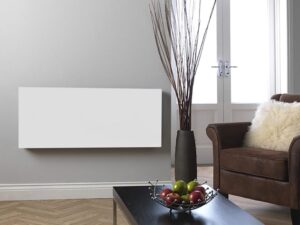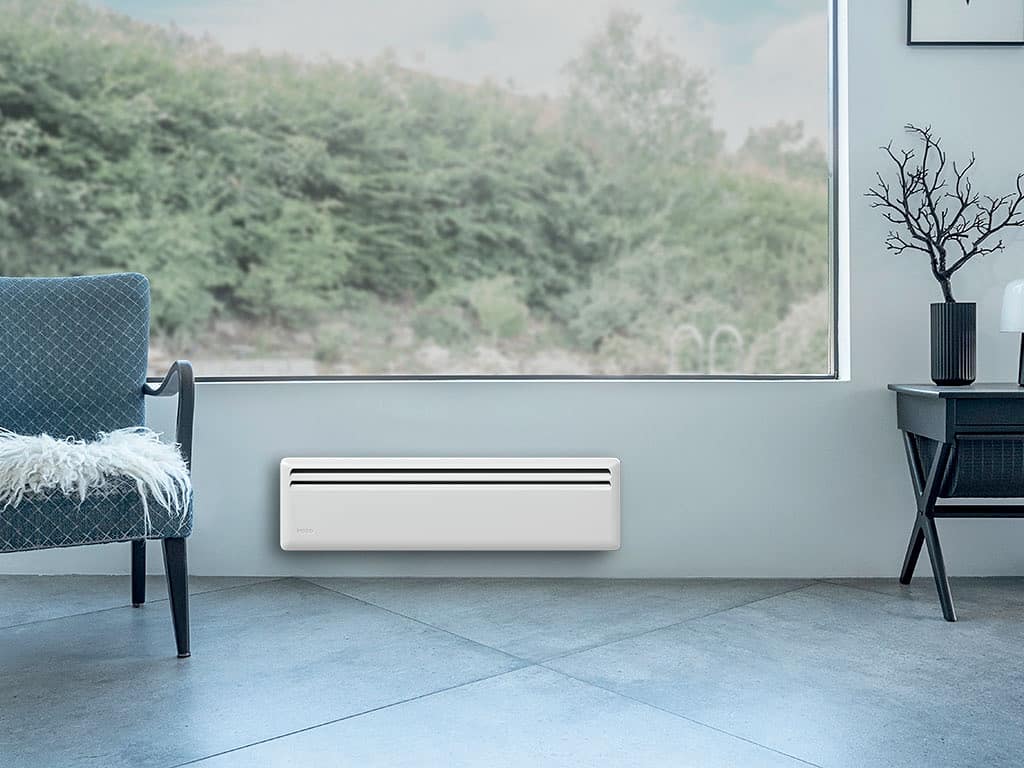FIR Heating Panels have become popular in recent years due to their energy efficiency and unique heat distribution capabilities. But how do they perform in real-life settings? Are they a viable alternative to conventional heating methods? We’ll break down these questions and more in our comprehensive look at FIR Heating-Panels.
Understanding the Basics: How Do FIR Heating-Panels Work?
FIR Heating-Panels work by generating far-infrared radiation. These long-wave infrared rays are absorbed by objects, materials, and people in the room, rather than heating the air directly. Once absorbed, the heat is then re-radiated into the room, providing a comfortable, evenly distributed warmth. Unlike conventional heaters, which work on the principle of convection, causing warm air to rise and cold air to settle, FIR panels provide radiant heat, resulting in fewer temperature fluctuations and a more consistent thermal environment.
The technology behind these panels is quite fascinating. They utilize a heating element, typically made from carbon or ceramic, which emits far-infrared rays when electricity is applied. The panel’s surface is designed to optimize the emission of these rays, ensuring the efficient distribution of heat. The panels’ ability to directly warm people and objects makes them a highly efficient heating solution. FIR panels operate at lower surface temperatures compared to traditional heaters, making them a safer option as well.
Their quiet operation, with no fans or motors, contributes to a tranquil and undisturbed environment. What sets these panels apart is that the heat they generate is akin to the natural warmth we feel from the sun. However, without the harmful ultraviolet rays. This means that while the panels warm your space, they do so in a way that feels natural and comfortable, rather than producing a dry, stuffy heat that traditional heaters often create.
Installation Tips for Far Infrared Heating Panels
Installing FAR Infrared Heating Panels requires a considered approach to ensure maximum efficiency and safety. Begin by choosing a suitable location for the panel. It should be installed in a place where it can radiate heat directly to the maximum possible area. The ceiling is often an ideal location, as it allows the infrared rays to cover a larger surface area. When installing on the wall, consider the height carefully.
It should be high enough to prevent accidental contact, yet not so high that it diminishes the panel’s effectiveness. In terms of orientation, the panel can be mounted either horizontally or vertically, depending on the room layout and your aesthetic preferences. During installation, ensure that the panel is securely mounted. Most panels come with specific mounting brackets designed for secure and stable installation. Follow the manufacturer’s instructions carefully to avoid any mishaps.
It’s recommended to use a professional electrician for the electrical connections. Although the panels operate on low voltage, handling electrical installations without adequate knowledge can be hazardous. Finally, do remember to leave enough space around the panel for air circulation. While the panels themselves do not heat the air, adequate ventilation around the panel helps prevent overheating. This is particularly important if you are installing the panel on a flammable surface like wood.
Real-life Efficiency of FAR Infrared Panels
When evaluating the practical effectiveness of FAR Infrared Panels, the results demonstrate a high degree of efficiency. These panels consume less energy in comparison to traditional heaters and offer superior heat distribution, making for a more comfortable and uniform thermal environment. One noteworthy attribute of these panels is the sustained warmth they provide. Due to their method of direct heat transfer, the warmth lingers in the room for a more extended period, even after the panels have been switched off.
This aspect is particularly beneficial in cooler climates, helping to maintain comfortable indoor temperatures whilst reducing energy consumption. It’s also worth noting that the efficiency of these panels is not just limited to energy use and heat output. Their quiet operation and unobtrusive design contribute to an overall improved user experience, adding to their appeal as an efficient heating solution.
This sustained performance and energy conservation validate FIR Heating-Panels as a highly effective heating method. Their capabilities exceed just basic heat provision, offering a range of advantages that combine to deliver enhanced comfort and improved energy utilization. In practical terms, this means lower energy bills and a more environmentally friendly heating solution, which is a significant consideration in today’s energy-conscious world.
 Maintenance of Ceiling Mounted Infrared Heating Panels
Maintenance of Ceiling Mounted Infrared Heating Panels
When it comes to the upkeep of Ceiling Mounted Infrared Heating Panels, you’ll find it to be a rather straightforward process. Owing to their design that lacks moving parts, these panels naturally possess an extended lifespan with fewer chances of malfunction. The absence of wear and tear eliminates the need for frequent repairs or replacements, hence making their maintenance a breeze. The only task required to maintain their efficiency is to keep the panels clean. Dust and grime accumulation can compromise the panel’s performance over time. Therefore, it’s advisable to clean the surface of the panels regularly.
A soft cloth and gentle cleaning solution should suffice in keeping your FIR Heating-Panels spotless and functioning optimally. However, it’s crucial to steer clear of abrasive cleaning agents. Such chemicals can potentially tarnish the panels’ surface and interfere with their radiant heating ability. If in doubt about suitable cleaning solutions, do not hesitate to consult with your panel manufacturer or supplier for advice. With just a little care and occasional cleaning, FIR Heating-Panels can serve you efficiently for a considerable length of time. Their minimal maintenance needs are just another perk of opting for this innovative heating solution.
Comparing FIR Radiant Panels vs. Conventional Heating
When comparing FIR Radiant Panels with conventional heating systems, several distinct differences become apparent. Traditional heaters operate on a principle of convection, heating the air in the room which then circulates. This can often result in inconsistent temperatures, with heat rising to the ceiling and cooler air settling below. On the other hand, FIR panels produce radiant heat, directly warming the objects, materials, and people within the space.
This ensures an even temperature distribution and a more stable thermal environment. Conventional heating systems also tend to consume more energy. They have to work harder to heat the circulating air and maintain a consistent temperature, often leading to higher energy bills. FIR Radiant-Panels, however, utilize less energy due to their direct heating method and can maintain warmth in a room for longer periods, even after being switched off, resulting in significant energy savings. In terms of safety, conventional heaters often operate at higher surface temperatures, posing a potential burn risk.
FIR panels, conversely, work at lower surface temperatures, enhancing safety while still providing efficient heat. Lastly, the aesthetic appeal and silent operation of FIR panels provide a clear advantage over conventional heaters. Traditional heaters can be bulky and noisy, whereas FIR panels offer a sleek, unobtrusive design and quiet operation, enhancing the overall ambience of the space.
Glass Radiant Heating Panels in Different Environments
Glass Radiant Heating Panels, a type of FIR heating-panels, demonstrate a versatile range of applications across diverse environments. One of the compelling advantages of these panels is their ability to seamlessly blend into any decor, making them a suitable choice for both domestic and commercial settings. They’re not just functional, but also aesthetically pleasing. In domestic settings, these panels can be installed in lounges, bedrooms, and even bathrooms for a consistent heat source. Their slim design and transparent glass surface can complement any interior design style, adding a touch of sophistication while providing efficient heating.
In commercial spaces such as offices, these panels serve as an effective heating solution without causing distraction, thanks to their silent operation. The direct heating mechanism provides a comfortable warmth for employees, enhancing productivity in the workplace. In industrial settings, Glass Radiant Heating-Panels can also offer effective heating solutions, efficiently warming large areas. Given their ability to directly heat objects and people, they can maintain comfortable working conditions, even in expansive spaces.
Optimizing Energy Usage of Glass Heating Panels
To maximize the energy usage of your glass heating panels, a few strategic steps can be implemented. Integrating a smart thermostat into your heating system is highly recommended. This device can adjust the heat emission from your panels in response to room usage and ambient temperature. This way, you prevent the system from wasting energy when the room is not in use or when the desired temperature has already been reached.
Consider the insulation of your space. Efficient insulation helps to retain the heat emitted by the panels for longer periods, reducing the need for constant operation of the panels. If your building’s insulation is poor, you might want to consider investing in improving it to enhance the panels’ effectiveness. Thirdly, proper panel positioning can also impact energy usage. Ideally, the panels should be installed in locations where their infrared radiation can reach as many objects and people as possible.
A ceiling mount usually offers the best coverage. Lastly, using a timer can help optimize energy usage. By programming your heating system to switch on shortly before a room is used and to switch off when it’s usually empty, you can ensure you’re only using energy when necessary. Implementing these strategies can effectively optimize the energy usage of your FIR glass heating-panels, leading to substantial energy savings over time.
FAQs
Q: Do FIR Heating-Panels require regular maintenance?
A: These panels require minimal maintenance. Apart from occasional cleaning to remove dust and grime, no additional upkeep is necessary, thanks to their lack of moving parts.
Q: Can FIR Heating-Panels be used in large spaces?
A: Absolutely. Their far infrared radiation effectively heats people and objects directly, making them suitable for heating spaces of varying sizes, from residential homes to expansive industrial areas.
Q: How can I maximize the energy efficiency of my FIR Heating-Panels?
A: Consider incorporating a smart thermostat that adjusts the panel’s heat emission based on room usage. Also, improving your building’s insulation can enhance the panel’s effectiveness, preventing wasted energy from escaping through poor insulation.
Q: Are FIR Heating Panels silent during operation?
A: Yes, FIR Heating Panels operate silently, making them an unobtrusive heating solution ideal for various settings.
Q: Can I install the FIR Heating-Panels myself?
A: While the installation process isn’t overly complicated, adhering to the manufacturer’s instructions is essential for safe and effective operation. If you encounter any challenges, consult with a professional.
Conclusion
FIR Heating-Panels offer a highly efficient and comfortable heating solution. Their unique heating method, minimal maintenance requirements, silent operation, and design versatility make them an attractive alternative to traditional heating systems. Besides providing a consistent and pleasant thermal environment, they are also energy-efficient, reducing energy bills and contributing towards a more eco-friendly world. When installed and used correctly, these panels promise enhanced comfort, improved energy utilization and a seamless blend of functionality and style.
| Other Good Articles to Read |
| Niche Blogs Connect |
| Blogs 97 |
| Blog Stitution |
| Blogs Unplugged |
| Blogs Cotch Rouge |
| Blog Signatr |
| Blog Sintonias |
| Blog Zilla |
| Consumer Forums |
| Finance Forums |
| G Blogs |
| Too Blog |
| Related Business Listings |
| Contact Directory |
| Local Business Profiles |



